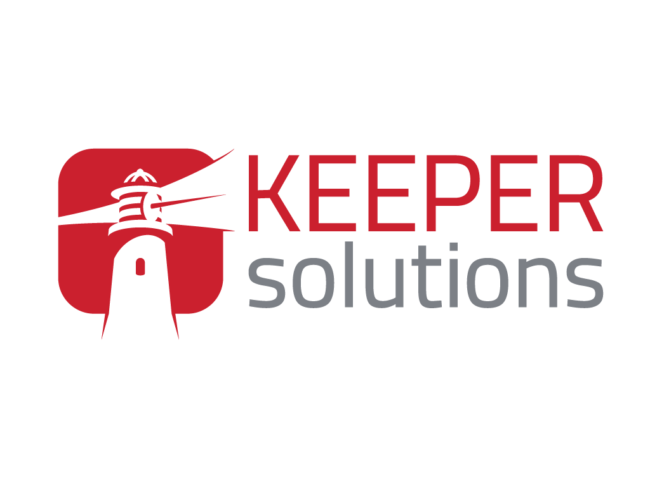Building MVP: 5 Tips for Start-ups
Stephen Walsh, FinTech South 2023
Keeper Solutions Founder and CEO, Stephen Walsh, took part in a fireside chat at this year’s FinTech South 2023, where he shared 5 key points that start-ups need to consider when building a MVP. He also looked at how to move from zero to minimum viable product (MVP) and beyond.
In this blog post, we run through these five considerations.

1. Design Sprints – Bringing Clarity to Your Ideas
When a start-up is just setting out, there are a whirlwind of ideas, opportunities and possibilities. If a company spots a gap in the market and has an idea for a product, it’s important to first test the waters and see if it’s viable and worth pursuing. Design sprints provide the perfect starting point. The mantra here is Sprint-to-Clarity.
A design sprint is a focused, short-term commitment used to map out challenges, explore solutions, decide on best approaches, create a prototype and then test it. At Keeper Solutions, the majority of our engagements start with a design sprint. They can be used to streamline ideas, hone in on the most impactful features, and create a clear roadmap for building a MVP.
A Design Sprint enables the founder to quickly clarify a few crucial items such as user personas, user journey definition, product UX design, a 360º audit of the data environment, and identification of key product features which may be AI driven. Once those matters are clarified then the technical architecture can be defined and a reasonably accurate estimate on the effort, time and cost to get to MVP can be put in place. This process puts the founder in a position to quickly pivot into development straight after the design sprint.
You can learn more about the role of design sprints here – Breaking Down the First 2 Months of Your Software Development Partnership. In this blog post we describe how design how design sprints are used in the discovery stage and how they set the foundation for a successful software development project.
2. The Big Decision – In-House vs Software Outsourcing
As you are building your software product or MVP, there will come a point when you will have to decide if you are going to scale your in-house development team, work with an external company or, maybe, a mixture of both. This is where the principles of in-house vs outsourced comes into play.
As a start-up, it’s essential that you understand your core strengths and what capabilities should be kept in-house. Equally, you must recognize when to leverage external expertise to accelerate growth without overextending your internal resources. Many companies think that you must choose one or the other but often the best approach is a combination of both. Outsourced software development teams can work alongside, and complement, existing in-house units. You can learn more about in-house vs outsourcing here, where we break down the pros and cons of both approaches.
There is a lot to consider when trying to pick an outsourced partner. You need to consider cost, time zone, reputation, capability and size. Of choosing a partner with domain expertise in the industry you are operating is very important. Getting into the right partnership should enable you to make good use of the investment you raise to fund your vision. Learn more about how to choose the perfect software development partner.

3. Building an MVP and Financing Your Vision
Something that plays a pivotal role in every start-up’s growth trajectory is the ability to raise capital and investment. For most scaling companies, raising funds is an artform in itself. Companies can be as innovative and disruptive as they want but it counts for nothing if they cannot finance their vision.
In the current climate it is more challenging than previous years. There is still plenty of VC investment available, however it is gravitating to the start-ups with the most compelling pitches. Start-ups should prepare meticulously for their seed round, understanding their financial needs and the kind of investors that align with their mission. In fact, it is often useful for a start-up to run a design sprint prior to seeking investment and meeting with investors.
And speaking of alignment, it’s invaluable to reserve stock options for both your core team and outsourced members. This ensures that everyone, even external partners, is deeply invested in the start-up’s success.
In a recent blog post, we posed the question – You’ve Just Received Investment. Now What?. In it, we looked at important considerations such as your runway, keeping track of costs, the international market, and constantly considering your customers’ needs.
Quick tip:
As mentioned at Fintech South, if you’re interested in getting up to $200,000 worth of cloud services free, it is worth subscribing to Google School for Start-ups and applying for the grant there. Learn more here.

4. Data, The New Oil
Data has often been dubbed the ‘new oil’ in the modern digital landscape. Every FinTech start-up should prioritize a comprehensive data audit. This involves tapping into public data like Open Banking, exploring valuable paid APIs, harnessing their internal data, and even diving into consumer behavior databases.
With the right data, FinTech products can become truly transformative and AI-powered platforms can reach their full potential.
5. The User-Centric Feedback Loop
For any start-up, but especially in FinTech, the end-users are the heartbeat of the product. Utilizing tools like in-app surveys, usability tests, and beta groups is essential. It’s not just about launching a product; it’s about refining and iterating based on real user feedback. By maintaining a direct line to users, start-ups can ensure their product continuously evolves in line with genuine needs and preferences.
At Keeper Solutions, we always suggest using a design-led approach to building your MVP. Design-led development or design thinking is a way of building new products that considers the consumer’s needs above all else and constantly thinks about the user at every stage of development. Whether you call it a process or an ideology, design-thinking is simply an approach to problem-solving that focuses on what the end-user wants. It’s not about appeasing a board of directors or creating a product for the sake of it.
Design thinking is human-centered. This means that changes and improvements are made based on evidence of how people are engaging with a product. This is in contrast with making changes based on how someone thinks they might engage with a product. This again, is where gathering rich data is so important — taking in user feedback and improving your product based on their wants and needs. You can learn more about this design-led approach here.




